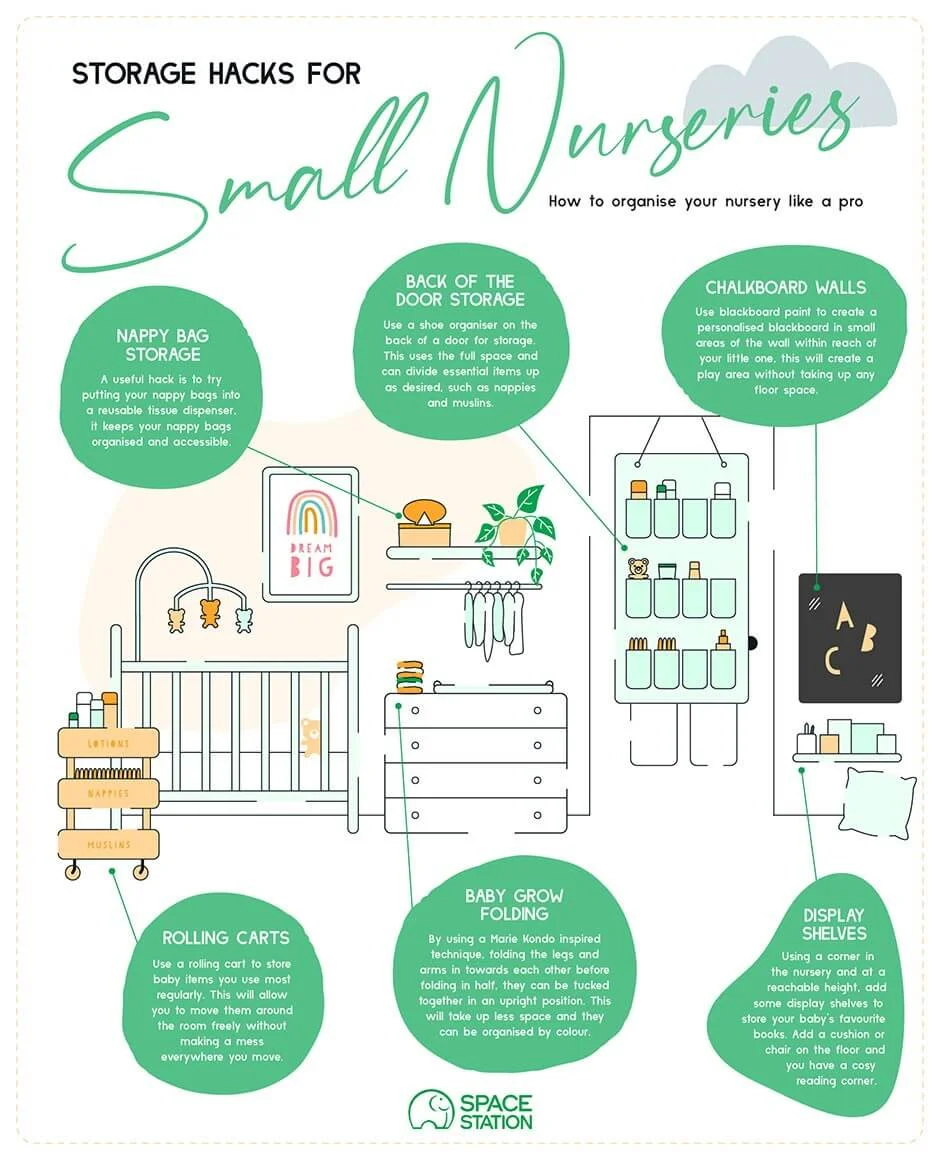Welcoming a baby into the world is a huge change for any family and quickly changes the dynamic of your everyday life as well as the layout of your home.
Babies grow quickly out of clothes, become too big for toys, prams and cots, which means you’re regularly buying new items to fit, amassing a growing collection of unused items which take up valuable space at home.
In fact, UK parents’ desire for more space is widespread, with our recent study revealing that 74% admit they feel they need more space after having children1. British parents also feel like they have completely outgrown their home by the time their child turns five, on average, whilst 31% feel the same by the time their child turns just two years old.
In order to help parents keep their nurseries or baby rooms from becoming cluttered, we’ve put together some tips on how best to store your baby’s belongings at home, which will in turn keep them in good condition should you ever look to sell them or pass them on.

Baby clothes
As a parent to a new baby, it can be hard to know whether you’re coming or going sometimes, with constant nappy changing and night feeds making any form of routine difficult. However, an easy solution for keeping your tiny tot’s outfits under control is to organise them by size. This can be done either in a wardrobe or in drawers to ensure the clothes you no longer need can be kept in good condition.
Keeping your most-used everyday items by the side of the changing table will make sure you have everything you always need close by, whilst ensuring the space is tidy as well. Consider getting a basket to keep everything in, meaning they’ll be in one place and within easy reach.
Drawer dividers are another great way to maximise storage space and will enable you to store all your baby clothes by size, keeping them neatly folded and ready to either use or sell when the time is right.
Cots
Cots are often quite bulky and difficult to manoeuvre in your nursery, but there are things you can do to make the best use of the space depending on what kind of cot you have.
If you have a fixed cot, consider using storage containers for other items, such as toys and shoes, and keep them in the space underneath the cot. This will minimise any clutter on the nursery floor and make it feel more spacious.
Alternatively, you could go for a collapsible cot, one that can be simply folded down and kept to one side whilst not in use, leaving you more space in any room you use.
Importantly, if you’re looking to put your cot into long term storage for future use, it is important to take the time to properly disassemble it, before covering the components in a dust sheet or blanket to avoid it getting dirty or exposed to moisture.
Prams
Prams come in many shapes and sizes but undoubtedly take up space in the home. However, virtually all prams can be folded down and stored and there are number of different solutions to maximise your living space.
If you keep your pram in your nursery with everything else, consider fitting a sturdy hook on the back of the door and hanging it there, this will keep it out of the way. Alternatively, you can store it under your bed, in a space under the stairs or, if space is really tight, in the boot of your car, which would also remove the hassle of loading up the car for any trips out.
Utilising out of the way spaces around the home will not only save space, but keep the pram from getting damaged and will therefore make it easier to sell or recycle in the future.
Toys
The age-old battle of storing toys is one that will always be fought by parents. As a really young baby, they won’t need much in the way of toys, but as soon as they start to crawl, walk and explore, the collection of toys will grow alarmingly.
To help avoid toys being scattered around every room in the house, introducing some colourful baskets or plastic boxes for your baby’s toys will make them easy to tidy up and keep them in one place. Then, as your child gets older, you can work with them to help them learn to put the toys away to keep floorspace free (which will also minimise risks of trips and falls).
Keeping some spare, airtight containers in the loft or garage will come in handy when it comes to storing outdated toys without risk of damage or deterioration, which will be particularly useful if you look to sell them or give them to charity further down the line.
If you find yourself struggling for space at home, we have a range of home storage options available.
Sources
1 Study of 1,000 parents carried out by TLF Research on behalf of Space Station in June 2021